To Kristin
 STERLING and the distinctive Sterling logo are registered trademarks
STERLING and the distinctive Sterling logo are registered trademarks
of Sterling Publishing Co., Inc. 10 9 8 7 6 5 4 3 2 1 Published by Sterling Publishing Co., Inc.
387 Park Avenue South, New York, NY 10016
2011 by Dan Searing All rights reserved Cover and book design by Laurie Dolphin and Allison Meierding
Edited by Jessica Jones
Concept by Jessica Jones
Cocktail photography by Ken Skalski
Punch bowl photography by Stuart S. Shapiro
Still-life photography by Mark A. Gore
Produced by Dolphin + Jones Book Packaging and Media Sterling ISBN 978-1-4027-8582-5
Sterling eBook ISBN: 978-1-4027-8898-7 For information about custom editions, special sales, premium and
corporate purchases, please contact Sterling Special Sales
Department at 800-805-5489 or specialsales@sterlingpublishing.com.  PRODUCED BY
PRODUCED BY
dolphin + jones THE
PUNCH
BOWL 75 RECIPES SPANNING FOUR CENTURIES
OF WANTON REVELRY  DAN SEARING
DAN SEARING 
 CONTENTS PART I
CONTENTS PART I
THE
WORLD OF
PUNCH 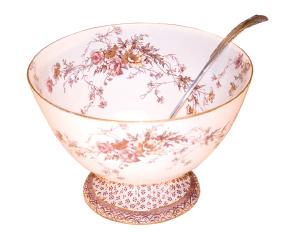 DOULTON BURSLEM AESTHETIC MOVEMENT TALL FOOTED PUNCH BOWL (C. 1890), brown transfer decoration and hand-painted highlights of pink and yellow. A S A YOUNG CHILD, I would often stare at my parents collection of nineteenth- and early-twentieth-century punch-bowl sets and wonder what sort of punch could possibly warrant a grand piece of decorated porcelain, an extravagant cut-glass bowl, or a grand silver ladle.
DOULTON BURSLEM AESTHETIC MOVEMENT TALL FOOTED PUNCH BOWL (C. 1890), brown transfer decoration and hand-painted highlights of pink and yellow. A S A YOUNG CHILD, I would often stare at my parents collection of nineteenth- and early-twentieth-century punch-bowl sets and wonder what sort of punch could possibly warrant a grand piece of decorated porcelain, an extravagant cut-glass bowl, or a grand silver ladle.
It was only many years later, upon entering the world of wine and spirits, that I learned just how worthy the most classic of punches are of an extraordinary presentation. Through my work in the world of high-end liquor importing, Ive had the good fortune to learn about traditional punches from the historian and noted author David Wondrich, who taught me that in its golden era, punch embodied all things exotic and expensive: spice, sugar, fruit, imported spirits, and, if the imbibers were truly fortunate, clean water. It should come as no surprise that gilded porcelain, silver, and even gold punch bowls (and equally elaborate ladles) were produced for its service. Many nineteenth-century cocktail recipe books would even place the recipes for punches in the front of the volume, thus suggesting their pride of place. But all this sparkle and grandeur doesnt mean an exceptional punch is out of reach for the average or novice home entertainer. Many traditional recipes, as youll find throughout this book, are surprisingly easy to prepare.
Though some of the ingredients require some leg work to track down, and a few punches need some prep just before service, classic punches are a great way to display your heirlooms and treat guests to something they may not have experienced before. Needless to say, the punches here are dramatically tastier than what you may have sampled at high school or college parties. Forget those grain alcohol concoctions and the sugary Kool-Aid mixtures and enter the realm of the sophisticated (and delicious) punch. When entertaining my own guests with classic punches, they often comment on the exceptional flavors and aromatics of fruit and spice. Sometimes they even ask to see the ingredients. 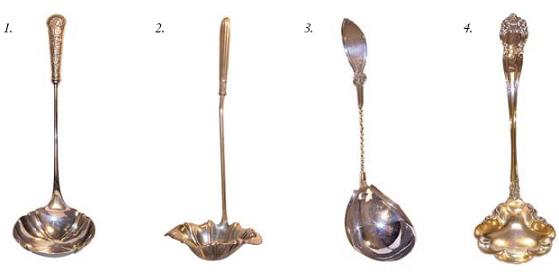 1.
1.  1.
1.
PAIRPOINT SILVER PLATED LADLE (C. 1890), with lobe-shaped bowl and Aesthetic Movement repouss handle with acanthus leaves and floral decoration. 2. SILVER PLATE PUNCH LADLE (C. 1920S), with elaborately shaped cup and sterling silver handle. 3. ROGERS BROTHERS NEO-CLASSICAL SILVER PLATE PUNCH LADLE (C. J. B. AND S. M. M.
KNOWLES STERLING SILVER ART NOUVEAU LADLE (C. 1900), with elaborate scrolling, lobed bowl with gold wash interior. The revival of punch is a cornerstone in the reemergence of some long-forgotten traditional spirits. Some are renowned classics, while other spirits are less familiar to the average consumer. Two of the spirits my firm has reintroduced into the U.S. market, with the encouragement of Mr. Wondrich, are: Batavia arrack and pure pot-still Jamaica rum.
Batavia arrack, a beguiling and aromatic cane spirits from the East Indies (now Indonesia), became famous in England and the United States for its role as the quintessential spirit for punches. The other more recent introduction is that of old-school, pure pot-still Jamaica rum, made famous in the late nineteenth and early twentieth centuries, when the British still lorded over the islands. Pot-distilling produced a style of rum that gave extraordinarily complex flavor and gravitas to punches and other mixed drinks. Thanks to the resurgence of interest in classic cocktails and punches, there are better spirit selections available today than there have been for decades, making many of the famous punch recipes featured here accessible again.  Thanks to the resurgence of interest in classic cocktails and punches, there are better spirit selections available today than there have been for decades Whether in premier cocktail bars, restaurants, or at home, its a joy to see how punch and the elegant bowls from which it is served offer convivial sophistication and efficiency. To the host, a punch prepared in advance affords more time with guests.
Thanks to the resurgence of interest in classic cocktails and punches, there are better spirit selections available today than there have been for decades Whether in premier cocktail bars, restaurants, or at home, its a joy to see how punch and the elegant bowls from which it is served offer convivial sophistication and efficiency. To the host, a punch prepared in advance affords more time with guests.
To the guest, punch offers flavorful complexity and a visual spectacle. By contrast, the straight pour of wines and spirits can seem limiting. A group sharing the same drink has a focal point, a unifying element. Moreover, when serving just a single bowl, an exquisite and exotic aroma can fill a room, leading all present to consider its artful presentation, storied past, and, most especially, its deliciousness. Such is the effect of these punches, and so may it also be for you and your guests. 1890), With hand-painted, two-color, raised-paste gold grapes and leaves and matching punch cups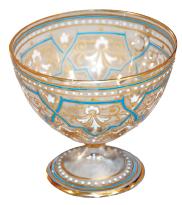 SIGNED LOBMEYR FOOTED CRYSTAL PUNCH CUP (C. 1890), hand-blown with hand-painted enamel decoration, Austria M OST OF THE PUNCHES IN THIS BOOK were developed before the twentieth century, and most of the measurements and instructions used in the original recipes are either incredibly arcane or so brief as to be mystifying. 1890),
SIGNED LOBMEYR FOOTED CRYSTAL PUNCH CUP (C. 1890), hand-blown with hand-painted enamel decoration, Austria M OST OF THE PUNCHES IN THIS BOOK were developed before the twentieth century, and most of the measurements and instructions used in the original recipes are either incredibly arcane or so brief as to be mystifying. 1890),
Next page
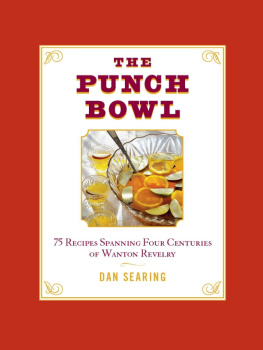

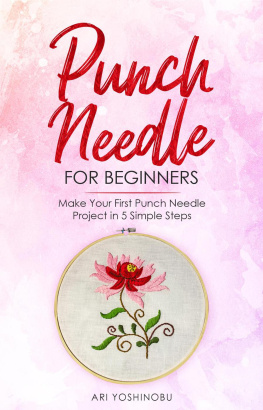




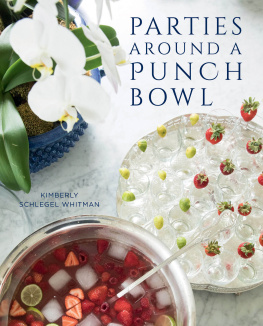
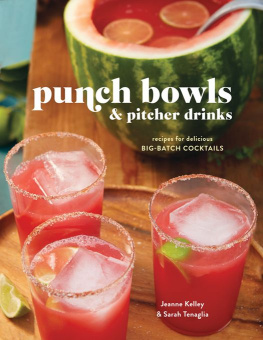


 STERLING and the distinctive Sterling logo are registered trademarks
STERLING and the distinctive Sterling logo are registered trademarks PRODUCED BY
PRODUCED BY DAN SEARING
DAN SEARING 
 CONTENTS PART I
CONTENTS PART I DOULTON BURSLEM AESTHETIC MOVEMENT TALL FOOTED PUNCH BOWL (C. 1890), brown transfer decoration and hand-painted highlights of pink and yellow. A S A YOUNG CHILD, I would often stare at my parents collection of nineteenth- and early-twentieth-century punch-bowl sets and wonder what sort of punch could possibly warrant a grand piece of decorated porcelain, an extravagant cut-glass bowl, or a grand silver ladle.
DOULTON BURSLEM AESTHETIC MOVEMENT TALL FOOTED PUNCH BOWL (C. 1890), brown transfer decoration and hand-painted highlights of pink and yellow. A S A YOUNG CHILD, I would often stare at my parents collection of nineteenth- and early-twentieth-century punch-bowl sets and wonder what sort of punch could possibly warrant a grand piece of decorated porcelain, an extravagant cut-glass bowl, or a grand silver ladle. 1.
1.  Thanks to the resurgence of interest in classic cocktails and punches, there are better spirit selections available today than there have been for decades Whether in premier cocktail bars, restaurants, or at home, its a joy to see how punch and the elegant bowls from which it is served offer convivial sophistication and efficiency. To the host, a punch prepared in advance affords more time with guests.
Thanks to the resurgence of interest in classic cocktails and punches, there are better spirit selections available today than there have been for decades Whether in premier cocktail bars, restaurants, or at home, its a joy to see how punch and the elegant bowls from which it is served offer convivial sophistication and efficiency. To the host, a punch prepared in advance affords more time with guests. SIGNED LOBMEYR FOOTED CRYSTAL PUNCH CUP (C. 1890), hand-blown with hand-painted enamel decoration, Austria M OST OF THE PUNCHES IN THIS BOOK were developed before the twentieth century, and most of the measurements and instructions used in the original recipes are either incredibly arcane or so brief as to be mystifying. 1890),
SIGNED LOBMEYR FOOTED CRYSTAL PUNCH CUP (C. 1890), hand-blown with hand-painted enamel decoration, Austria M OST OF THE PUNCHES IN THIS BOOK were developed before the twentieth century, and most of the measurements and instructions used in the original recipes are either incredibly arcane or so brief as to be mystifying. 1890),